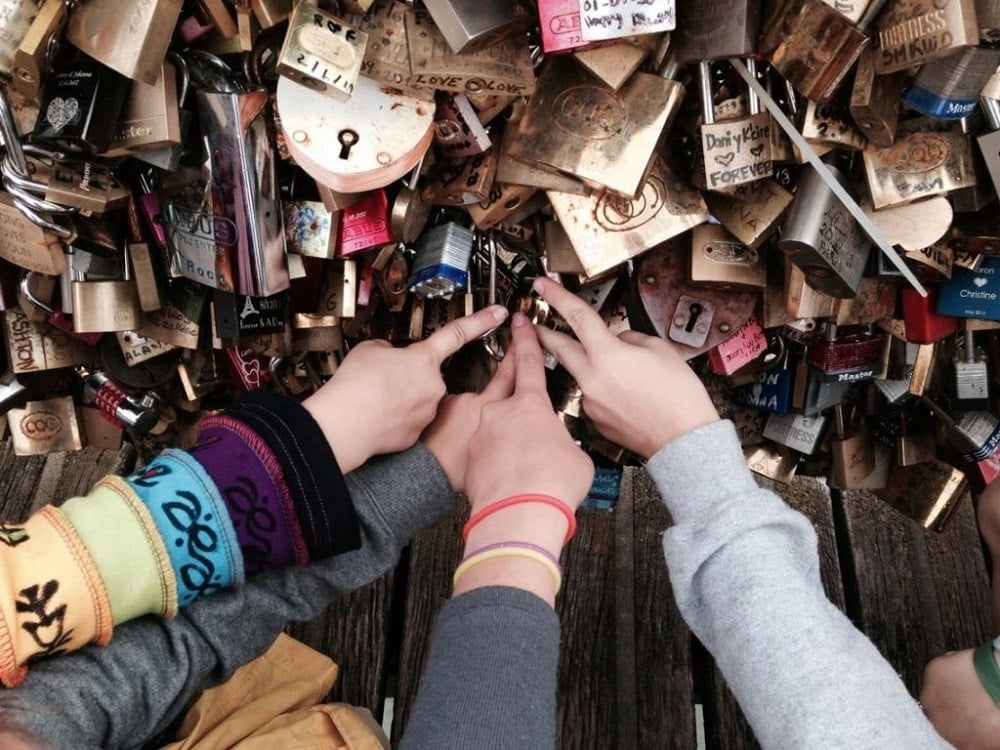Homeschooling in Paris during a hot summer August, when many Parisians had left the city for the beaches, is an experience I don’t ever want to forget with my children. Every street, museum, cafe, bookstore, tourist attraction offered teachable moments.
The Seine River and its beautiful bridges offered many of these moments, especially Pont des Arts.
Update: In April 2016, it was reported that Paris had made the famous Pont des Arts (Love Lock Bridge) more lock proof.
Pont des Arts
In Paris, across the River Seine, lies the “bridge of locks” pedestrian bridge, Pont des Arts. In recent years, it has become a popular spot to display committed love. Couples display their commitment by attaching a padlock to the bridge railing sides, first writing their names on a padlock and then throwing the key into the Seine river below.
The first time I saw the bridge, it was from a distance and I was nearly blinded by the gold and colors glistening in the sun. When I got closer, I realized that what had caught my eye was the shine from the thousands of padlocks on the bridge. My homeschoolers and I were instantly mesmerized by the bridge, locks, and bonds that have brought thousands of couples, families, and friends to Pont des Arts to give their love symbolic permanence.
Apparently, while the city of Paris isn’t thrilled with the locks for a number of reasons, tourists and couples love the locked in love concept, and the trend is spilling over to other bridges (and as my homeschoolers observed to the Eiffel Tower) and into other parts of the world.
The Pont des Arts makes for awesome homeschool discussion for kids of all ages and can span a number of topics, such as: environmentalism, pollution, water quality, human footprint/impact, political activism, laws/regulations, commitment/love/institution of marriage, the tourism industry, to name a few.
- What happens to all those keys at the bottom of the Seine?
- Will those keys leach chemicals into the Seine and affect water quality?
- How will the weight of all those locks impact the bridge–was it engineered to hold that additional weight?
- What about vandalism? Who pays or cleans up the mess when locks are destroyed, railing cut, etc.?
- What happens to the lock if a couple breaks up or gets divorced–does it remain on the bridge?
- Is locking a padlock and/or throwing a key into the River a crime?
- What type of enforcement mechanisms exist to prevent this type of activity? Should it even be prevented?
- How does the “bridge of locks” contribute to Paris’ tourism?
- Does Paris financially benefit from padlocked love displays on Pont des Arts?
- What does it mean to be committed to someone?
- What does the padlock symbolize?
- Are the padlocks on the Pont des Arts Art?
The Pont des Arts is definitely one of our top homeschooling in Paris highlights, and I have no doubt that it will be a useful reference for future wanderschool ‘classroom’ discussions.
Subscribe to the Wanderschool Newletter. Get the latest travel news delivered right to your inbox.


